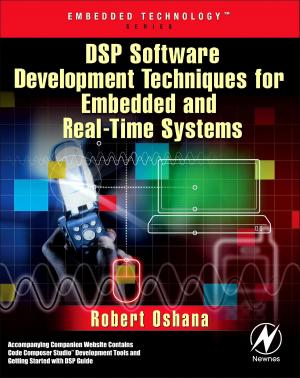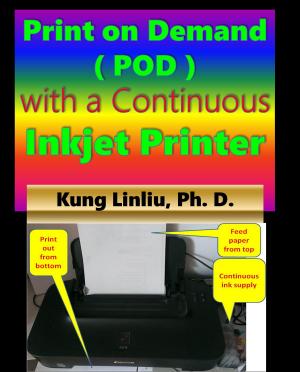VLSI Interview Questions with Answers
Nonfiction, Science & Nature, Technology, Electronics, Semiconductors, Circuits, Digital| Author: | Sam Sony | ISBN: | 9780985296803 |
| Publisher: | Sam Sony | Publication: | March 20, 2012 |
| Imprint: | Language: | English |
| Author: | Sam Sony |
| ISBN: | 9780985296803 |
| Publisher: | Sam Sony |
| Publication: | March 20, 2012 |
| Imprint: | |
| Language: | English |
If you can spare half an hour, then we guarantee success at your next VLSI interview. Do you want to secure at least 3 to 4 job offers by succeeding at all the phone and on-site Job interviews for this position? Or you simply want answer to most frequently asked interview questions in digital VLSI design?
Did you know that people who made targeted question answer preparation for job interview are 4 times more likely to get job offer than those who don't ? Did you also know that there is a set of questions that is likely to be repeatedly asked by interviewers across the industry, no matter who you talk with in the field.
How valuable would be to get hold of that set of questions ? You see, you already have a upper hand in your job search, as you have been doing research about interviews and about what kind of questions are asked in interviews.
Let me tell you a bit about myself. I was not so lucky my friend. When I started doing interviews, I was not feeling much confident during interviews and I was getting cornered by some of the questions that were asked to me. I kept getting turned down.
The old job was extremely boring and a new job had to be found, there was no choice. I started thinking more and more as to why I was failing? What was wrong with me? The failure was very much unlike me.
I was always a top brass performer at my previous job and I did extremely well at school. I started thinking back as to what was going on. It did not take too long to realize that I wasn't prepared well and Was Getting Taken Aback By Surprising Questions.
Imagine what difference it makes when you're faced with something you already known and have practiced!! I started doing research, first I collected all the questions that were asked to me, then I scoured the libraries and books and found all important questions relevant to the field and I got answers to all those questions.
Later I asked all my friends and all my colleagues in the industry, who themselves were interviewers, for frequently asked questions and found out definitive answers to all those questions. That's how I came up with the set of questions and answers that you'll find here.
By then I had already secured exactly the type of job I was looking for. I gave this set of questions to my friends who were searching for job, and all of them found it extremely useful. They recommended me that I make this available to general public, that's when I decided to make it available here. And now you can get full access to the same set of questions with answers.
But what about the questions that are available on the Internet for free? Why should I pay for it? Well my friend, would you leave something as important as a job interview to the chance? In such a bad economy? I agree, it’s possible to find some good information for free on Internet.
But most of the information on Internet is scattered, unorganized, outdated and not structured to be of value to someone like you. At times it could be outright wrong!! You’ve to make sure you get your information from a trusted, proven and very serious resource.
You get very carefully chosen 95 of the most important, most likely to be asked questions with illustrated answered, when it comes to interviewing in the field of static timing analysis. Knowing answers to these questions will ensure that you get the job offer from your next interview.
Book comes with 100% money back guarantee. If you're not satisfied, just let me know and I'll refund all your money, no questions asked.
Sample questions :
Everything you need to know about synchronous v/s asynchronous reset.
Complete details about asynchronous FIFO operation and gray codes.
What is the different between transport and inertial delays in Verilog.
What is ITD, inverted temperature dependence.
Make and XOR gate using 2 to 1 MUX.
Come up with logic that counts number of '1's in a 7 bit wide vector, using only combinational logic.
How does substrate bias affect MOS transistor Vth ?
Divide a clock by 3.
You have an input vector where on subsequent clock cycles you get a1,a2,a3 & a4 values. You need to output a1,a1+a2,a1+a2+a3 on subsequent clock edges. You're given a black box, which adds two input vectors and generates one output, with input to output latency of two clock cycyles. Design this circuit.
You've nothing to lose. Order now !!
If you can spare half an hour, then we guarantee success at your next VLSI interview. Do you want to secure at least 3 to 4 job offers by succeeding at all the phone and on-site Job interviews for this position? Or you simply want answer to most frequently asked interview questions in digital VLSI design?
Did you know that people who made targeted question answer preparation for job interview are 4 times more likely to get job offer than those who don't ? Did you also know that there is a set of questions that is likely to be repeatedly asked by interviewers across the industry, no matter who you talk with in the field.
How valuable would be to get hold of that set of questions ? You see, you already have a upper hand in your job search, as you have been doing research about interviews and about what kind of questions are asked in interviews.
Let me tell you a bit about myself. I was not so lucky my friend. When I started doing interviews, I was not feeling much confident during interviews and I was getting cornered by some of the questions that were asked to me. I kept getting turned down.
The old job was extremely boring and a new job had to be found, there was no choice. I started thinking more and more as to why I was failing? What was wrong with me? The failure was very much unlike me.
I was always a top brass performer at my previous job and I did extremely well at school. I started thinking back as to what was going on. It did not take too long to realize that I wasn't prepared well and Was Getting Taken Aback By Surprising Questions.
Imagine what difference it makes when you're faced with something you already known and have practiced!! I started doing research, first I collected all the questions that were asked to me, then I scoured the libraries and books and found all important questions relevant to the field and I got answers to all those questions.
Later I asked all my friends and all my colleagues in the industry, who themselves were interviewers, for frequently asked questions and found out definitive answers to all those questions. That's how I came up with the set of questions and answers that you'll find here.
By then I had already secured exactly the type of job I was looking for. I gave this set of questions to my friends who were searching for job, and all of them found it extremely useful. They recommended me that I make this available to general public, that's when I decided to make it available here. And now you can get full access to the same set of questions with answers.
But what about the questions that are available on the Internet for free? Why should I pay for it? Well my friend, would you leave something as important as a job interview to the chance? In such a bad economy? I agree, it’s possible to find some good information for free on Internet.
But most of the information on Internet is scattered, unorganized, outdated and not structured to be of value to someone like you. At times it could be outright wrong!! You’ve to make sure you get your information from a trusted, proven and very serious resource.
You get very carefully chosen 95 of the most important, most likely to be asked questions with illustrated answered, when it comes to interviewing in the field of static timing analysis. Knowing answers to these questions will ensure that you get the job offer from your next interview.
Book comes with 100% money back guarantee. If you're not satisfied, just let me know and I'll refund all your money, no questions asked.
Sample questions :
Everything you need to know about synchronous v/s asynchronous reset.
Complete details about asynchronous FIFO operation and gray codes.
What is the different between transport and inertial delays in Verilog.
What is ITD, inverted temperature dependence.
Make and XOR gate using 2 to 1 MUX.
Come up with logic that counts number of '1's in a 7 bit wide vector, using only combinational logic.
How does substrate bias affect MOS transistor Vth ?
Divide a clock by 3.
You have an input vector where on subsequent clock cycles you get a1,a2,a3 & a4 values. You need to output a1,a1+a2,a1+a2+a3 on subsequent clock edges. You're given a black box, which adds two input vectors and generates one output, with input to output latency of two clock cycyles. Design this circuit.
You've nothing to lose. Order now !!















